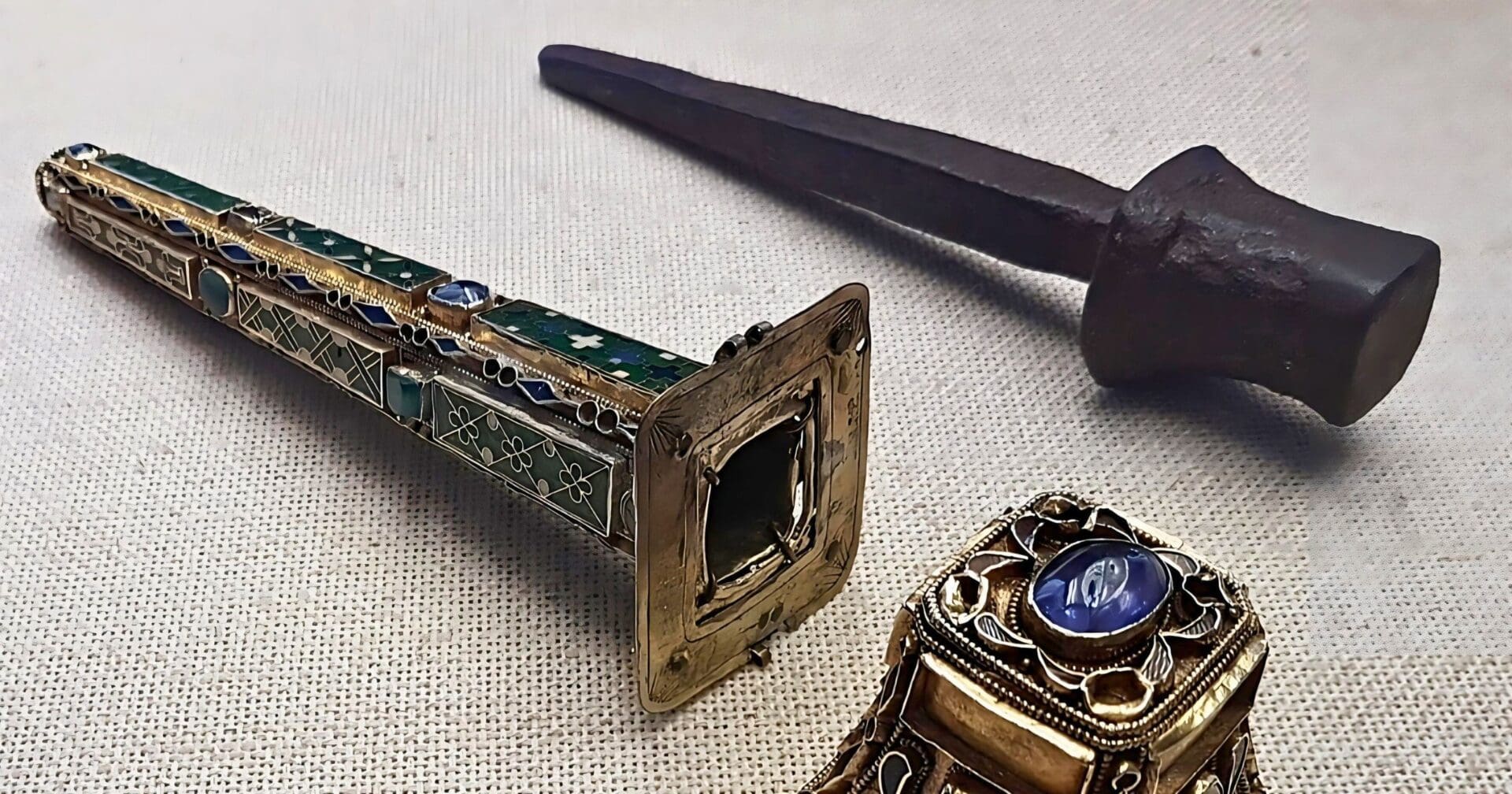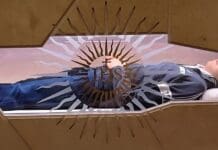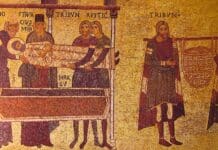Although a majority have been lost to history, some of the earliest relics of the Church still survive to this day. Those associated with the Holy Family have been the most studied and fascinating of them all!
Some of these include the Holy Sponge, True Cross, Holy Robe, Holy Lance, Holy Prepuce, the Virgin’s Girdle, the Holy Ring, and the Holy Tablecloth. While many are familiar with these relics, most are probably unfamiliar with The Holy Nails.
The Holy Nails
The Holy Nails, believed to have been used in the crucifixion of Jesus Christ, are considered part of the Arma Christi or Instruments of the Passion, central objects associated with Jesus’ suffering.
The True Cross and Holy Nails were discovered by Saint Helena, the mother of Constantine the Great, in the fourth century AD. According to tradition, Helena unearthed these sacred relics in Jerusalem and brought the nails back to Constantinople. Helena is said to have been guided by a Jew named Judas, and subsequent miracles affirmed the authenticity of the relics.
In Christian symbolism, the depiction of Jesus’ Crucifixion with either three or four nails varies. While medieval artwork typically showed four nails, some later Western art represented Christ with his feet overlapped and pierced by a single nail.
This debate over the exact number of nails used in Christ’s crucifixion has persisted for centuries. Triclavianism, the belief that only three nails were used, contrasts with the view by the Catholic Church that four nails were used.
This dates back to Pope Innocent III declaring Triclavianism heretical, asserting that four nails were indeed used. This decision was supported by accounts such as the stigmata of Saint Francis of Assisi, where the appearance of four nail marks on his body was interpreted as divine confirmation.
Photo credit: Kleon3 via Wikimedia Commons

















